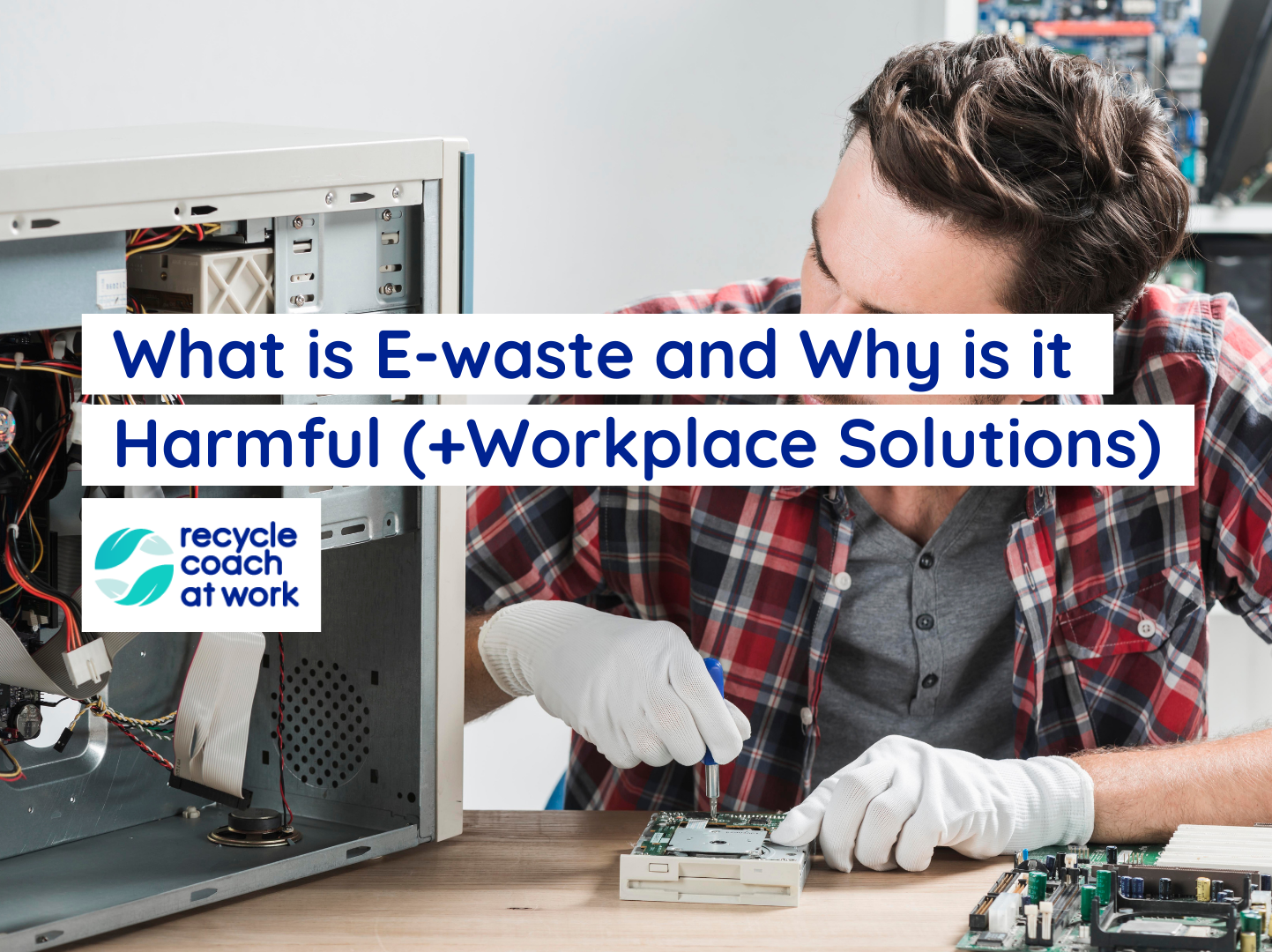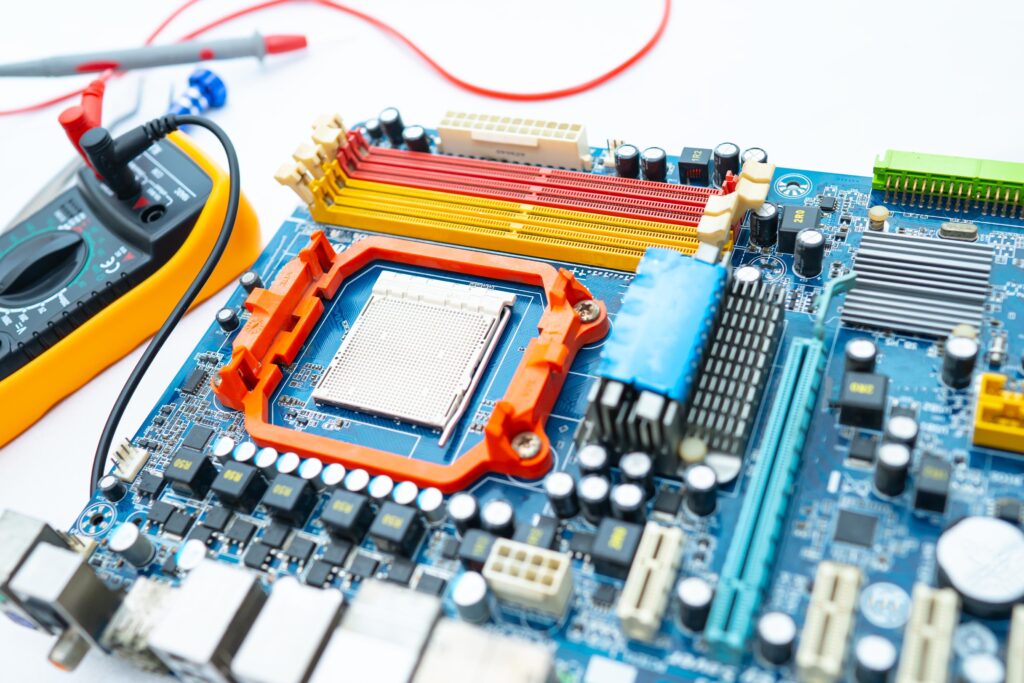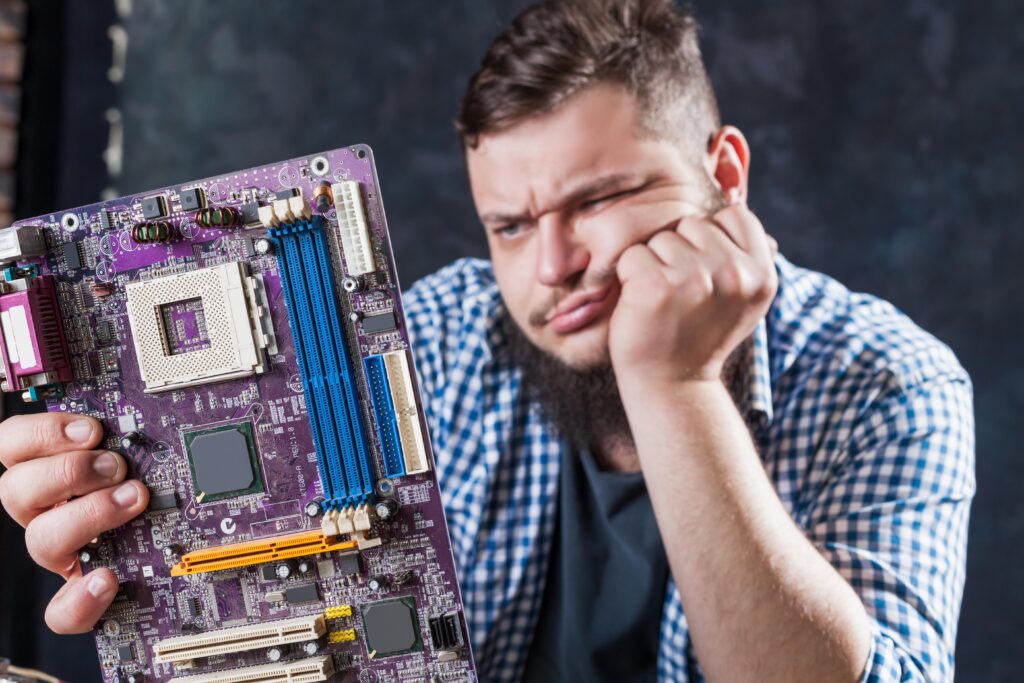What is E-waste and Why is it Harmful? (+Workplace Solutions)

Today’s question: What is e-waste anyway, and why is it still a problem?
Technology is often framed as a savior, but when it comes to growing levels of toxic waste – it spells trouble for the environment. Let’s take a closer look at what e-waste is, and why North American businesses face a bigger problem than we thought in the coming years.
For good measure, we’re also going to share with you how you can adopt positive e-waste recycling policies to keep your business green. That way, you’ll be part of the solution and a conscious player in the battle against toxic e-waste.
Here is a working definition of what e-waste is and why this problem isn’t going away any time soon.
What is E-waste?
Wikipedia describes e-waste as ‘discarded electronic waste.’
Consider our modern business environment. We have computers, cell phones, tablets, GPS devices, printers, scanners, electronic coffee machines, music players, digital cameras and on it goes.
The world of business is electronic.
The average American has access to more than 10 devices at any given time. This is a multi-billion dollar industry built on convenience and consumption. Because electronics are big business, and innovation sells – new models come out every year. And the old ones end up in the trash.

E-waste is the fastest growing stream of waste in the world – not plastic. And it’s also the most toxic form of waste, holding a variety of toxic metals and materials in each electronic device. These contaminate the earth, the ocean – cause disease and damage ecosystems.
So, e-waste – is one of the biggest ecological threats to emerge over the last decade.
Why is E-waste Harmful?
We wrote about the harmful metals found in e-waste here.
For companies, e-waste poses a unique and growing problem that can interrupt supply chains and is emerging as a health risk for employees, customers, and leadership in the future.
Here’s what you didn’t realize:
- China used to accept the world’s e-waste recycling (70% of it) until the ban
- Toxic leaching is mainly the fault of heavy metals from trashed e-waste
- Gasses rising from e-waste are harming health and contributing to climate change
- Companies are creating the products that become e-waste, and companies are consuming and landfilling many of these toxic products too

E-waste recycling is a viable solution for companies that want to take responsibility for the electronics they make, use, and throw away.
Workplace Solutions for E-waste Recycling
In the spirit of greener business practices, here are some inspiring workplace solutions for you to consider this year. Each will help you become more engaged with the ongoing battle against e-waste, and how important it is to recycle in this sector.
- Focus on repairs: The longer you can keep using your electronics, the longer they stay out of the waste or recycling streams. Hire a repair company to keep your electronics in good order.
- Consider lifespan during product creation: If your company builds electronic products, consider disposal and recycling during the product creation process. That way your teams will be inspired to use less harmful materials that work for longer than a couple of years.
- Set up an e-waste recycling program: If you don’t have one already, put an e-waste recycling program in place to make sure all broken electronic devices end up in the recycling stream.
- Host educational initiatives: Your employees may not be aware of e-waste, its impact, or how important it is to recycle these items. Launch educational programs to improve awareness, get your employees recycling and even bringing in their e-waste from home!

- Teach employees what e-waste can be recycled: As part of your educational program, teach employees and other stakeholders what types of e-waste are recyclable. For example, lithium-ion batteries are not a recyclable item, but old cellphones are.
- Find out how much e-waste you throw away: Conduct a waste audit (for steps click here) to determine how much e-waste your business creates. Benchmark it, institute a new e-waste recycling program, run educational initiatives, and measure the results.
- Become an e-waste drop-off point: Invite your customers to drop their e-waste at one of your locations to encourage community involvement. You can either add their e-waste to your recycling stream, or have a separate program/collection box for consumers to use.
It’s up to business owners like you to incorporate these amazing e-waste recycling practices into your company culture. Together, we can make sure that a higher percentage of e-waste is recovered, recycled, and kept from contaminating the environment.
That way the next time someone asks you, ‘what is e-waste?’ you’ll be able to talk them through a series of green practices that you’ve put in place to do your part in this ongoing battle.
Which of these e-waste recycling practices are you going to implement first? Tell us below.